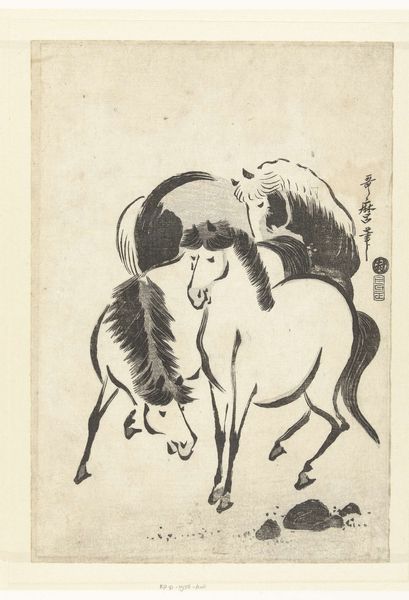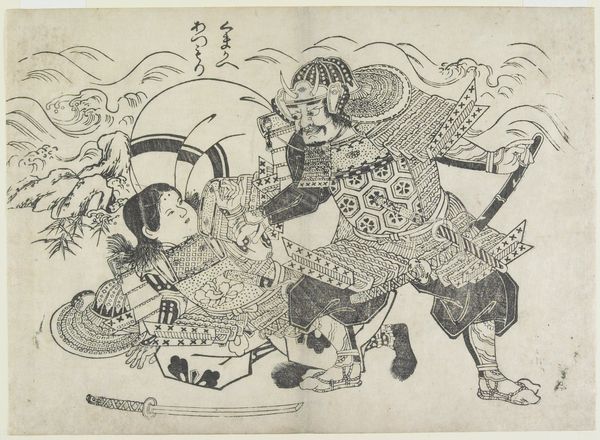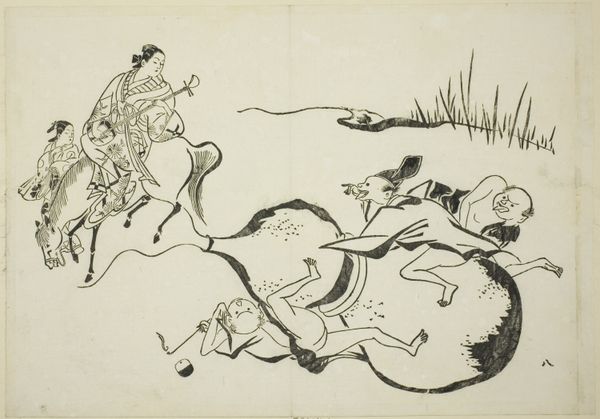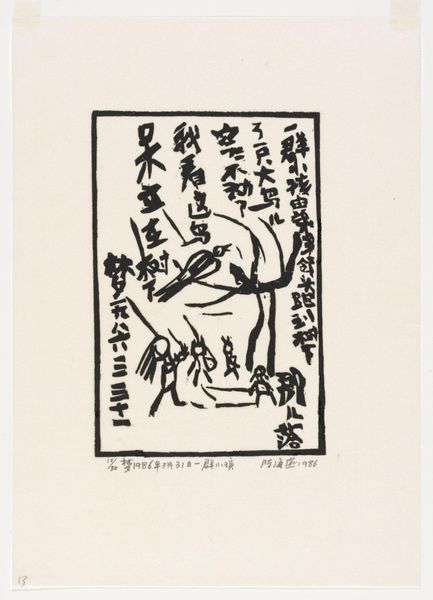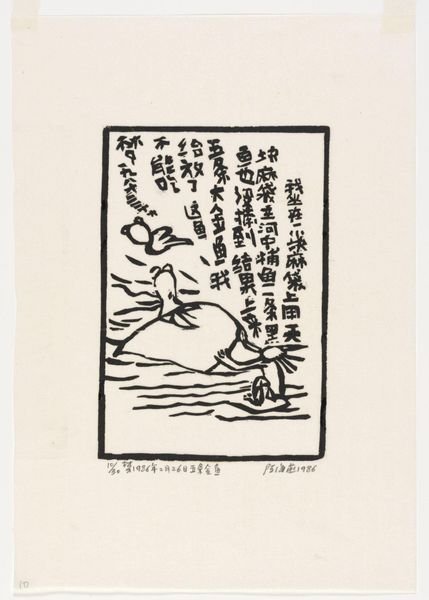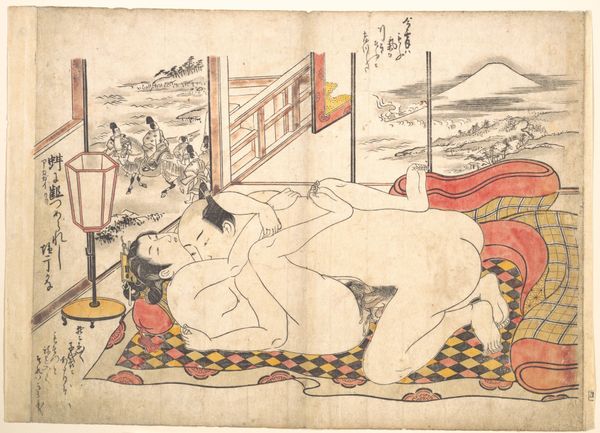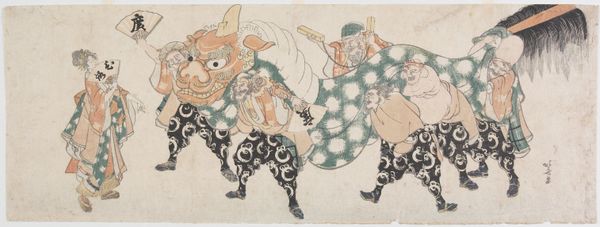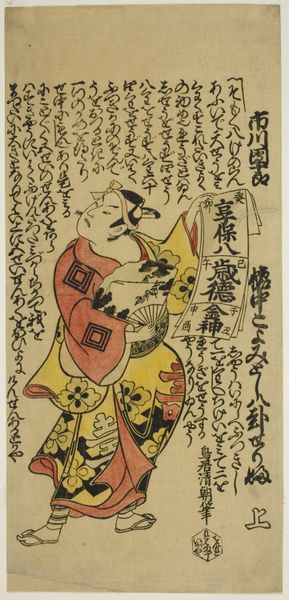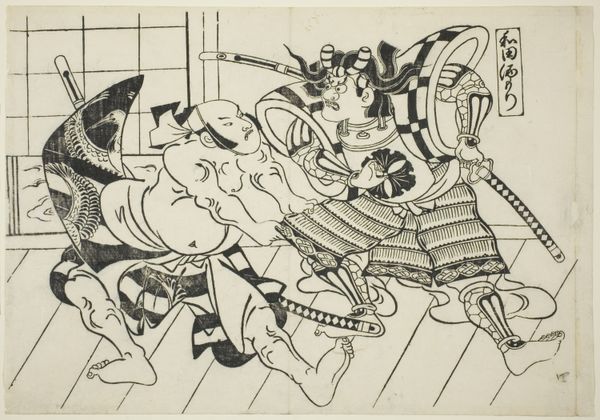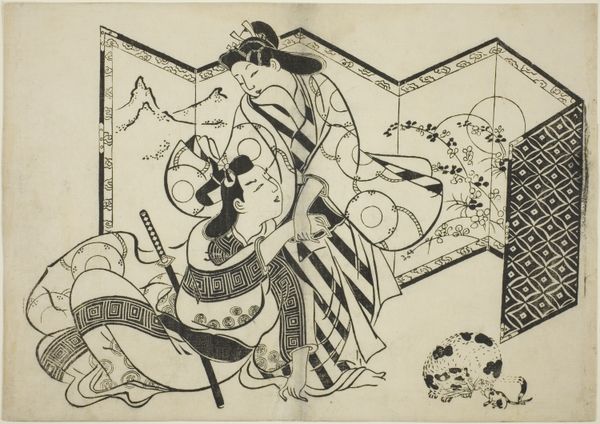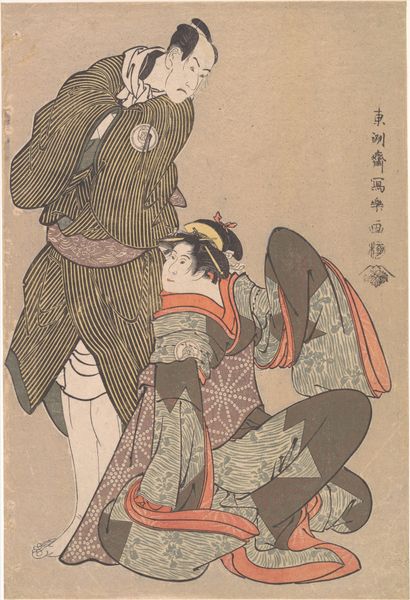
print, woodcut
#
ink drawing
# print
#
pen illustration
#
figuration
#
expressionism
#
woodcut
Dimensions: block: 14.8 x 24.8 cm (5 13/16 x 9 3/4 in.) sheet: 31 x 40.7 cm (12 3/16 x 16 in.)
Copyright: National Gallery of Art: CC0 1.0
Curator: This woodcut print by Gerhard Marcks, entitled Schwarzer Stier, or Black Cattle, dates to 1922. Editor: Stark. It's such a bold image, a feeling of suppressed energy captured through these incredibly contrasted, almost brutal black and white forms. Curator: Absolutely. Given its date, it’s tempting to view it through the lens of post-World War I German Expressionism. The material reality of woodcut itself suggests a kind of labor-intensive process, contrasting sharply with, say, the mechanized reproduction of lithography. One has to physically carve away at the block to produce the image. Editor: I’m particularly struck by how Marcks presents this almost violent interaction between the bulls. You get this very visceral sense of power and dominance. Considering the historical context – Germany grappling with economic devastation, political instability, and hyper-masculine ideologies bubbling to the surface – this image could be interpreted as a reflection on power dynamics and the anxieties of the time. Curator: An interesting perspective. The medium reinforces that reading as well. Wood as a material carries its own social weight; a resource that can symbolize both domesticity and agriculture or brutal tools such as wooden stocks, used in previous centuries for public punishment and humiliation. Editor: Exactly. And how the artist intentionally chooses such a primal subject. Animals in art so often function as stand-ins for human behavior. There's also an interesting conversation to be had about the lack of color, and how that contributes to its dramatic impact. Would the same scene, depicted in vivid color, carry the same weight? Probably not. Curator: Indeed. Marcks utilizes the negative space, the un-inked areas, to almost carve out detail. Notice how much definition there is in the legs of the forward bull simply because of what the artist chose to leave untouched? Editor: So well observed. The starkness serves as a challenge for the viewer, and by demanding this kind of work to find definition and movement in what could otherwise feel stiff, we end up participating in the scene ourselves. It invites us to contemplate the relationship between brutality and beauty, chaos and control. Curator: Seeing it through that lens offers another important point on considering artwork made under duress; labor that seems "rough" can also be intentionally simplified by material scarcity. We’ve been viewing it through an art historical lens and you have expanded that conversation by introducing wider socioeconomic ideas. Editor: Thanks. Ultimately, a powerful testament to the ability of art to capture a feeling through time.
Comments
No comments
Be the first to comment and join the conversation on the ultimate creative platform.
